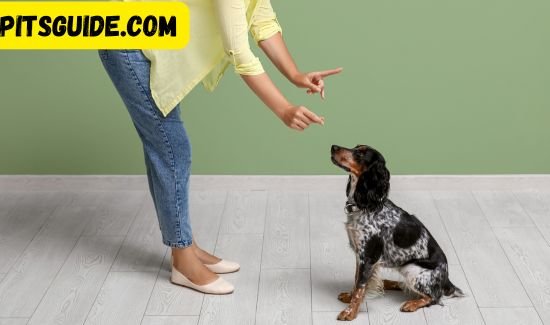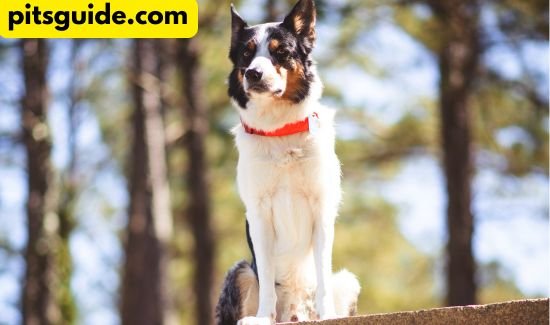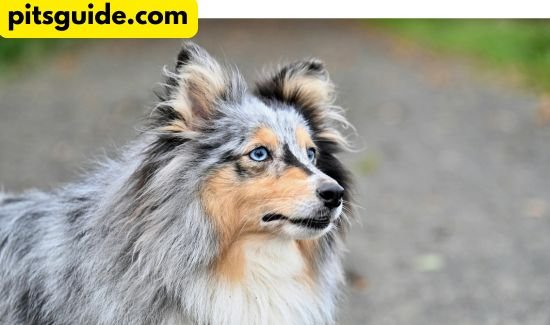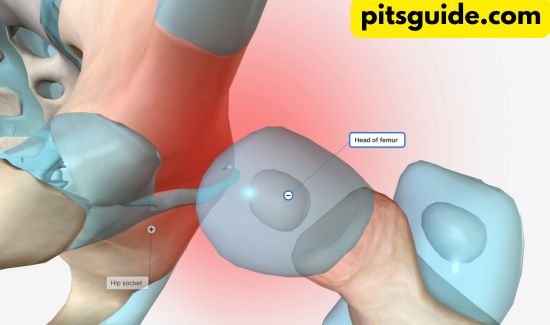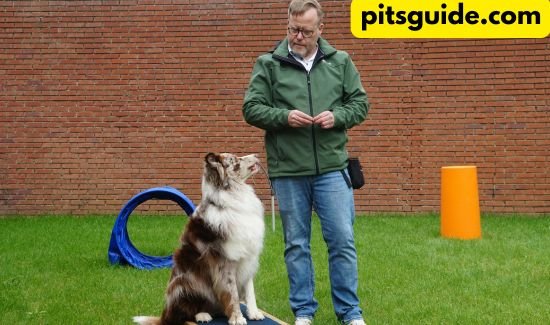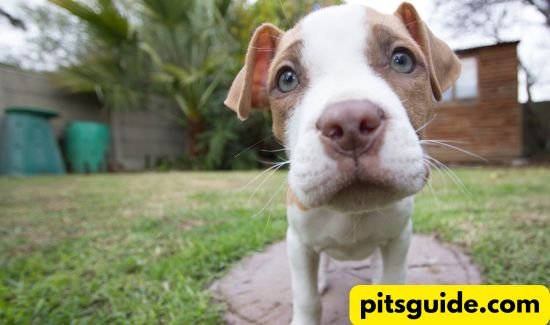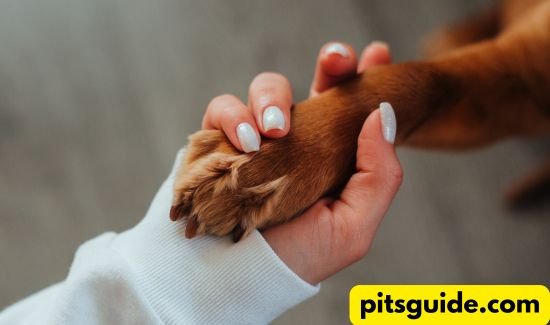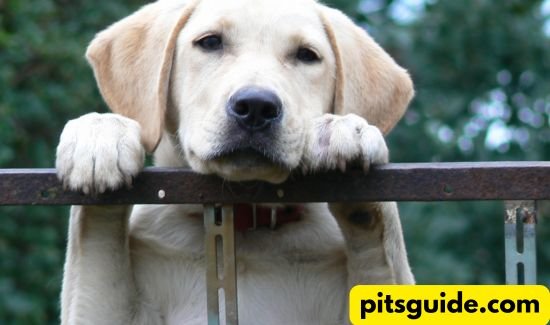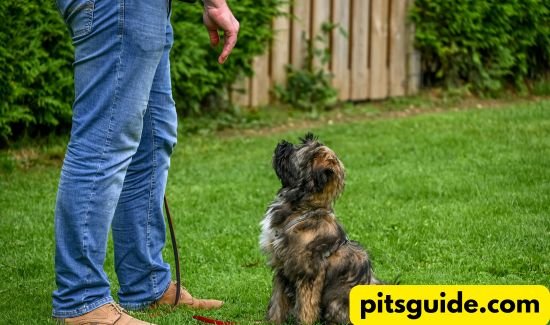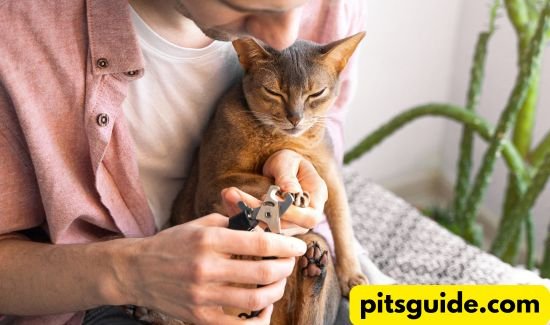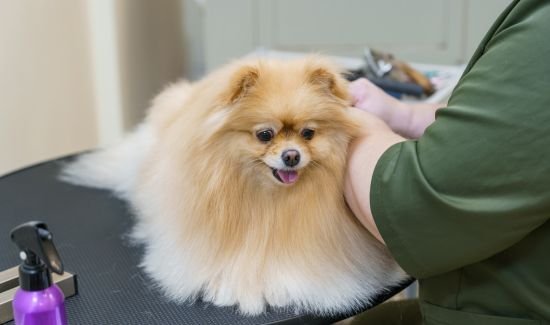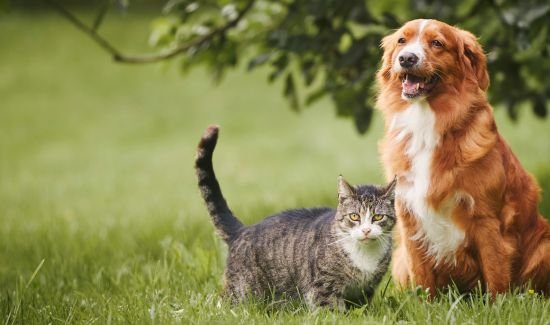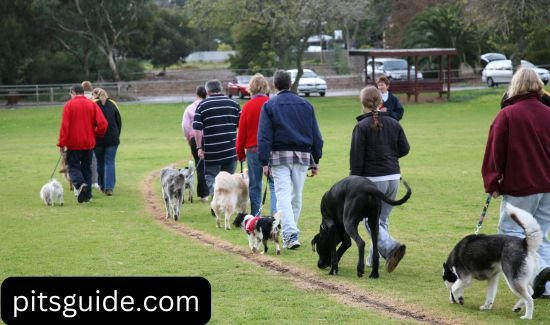Table of Contents
1. Introduction
– Importance of Training for Pit Bulls
– Building a Lifelong Bond
2. Understanding Pit Bull Psychology and Learning Patterns
– Natural Intelligence and Training Receptiveness
– Breed-Specific Behavioral Traits
– Motivation and Reward Systems
3. Essential Equipment and Training Tools for Success
– Leashes and Collars
– Positive Reinforcement Tools (Treats, Toys, Clickers)
– Training Aids (Head Halters, Remote Collars, Harnesses)
– Equipment Best Practices Table
4. Establishing Leadership and Trust with Your Pit Bull
– Building a Strong Bond
– Setting Clear Boundaries
– Consistent Communication Methods
5. Fundamental Training Tips for Pit Bull Success
– Timing is Everything
– Positive Reinforcement is Key
– Consistency is Crucial
– Patience and Perseverance
6. Core Commands: Sit, Stay, and Come
– Teaching the Sit Command
– Distance Control with Stay
– Reliable Recall Methods
7. Advanced Obedience Training and Socialization
– Off-Leash Training Techniques
– Impulse Control and Managing Distractions
– Socialization Skills for a Confident Pit Bull
– Obedience Training Techniques and Benefits Table
8. Exercise Routines and Physical Training Strategies
– Strength Building Activities
– Endurance Training Programs
– Mental Stimulation Exercises
– Exercise Type and Benefits Table
9. Troubleshooting Common Training Challenges
– Addressing Stubbornness and Resistance
– Overcoming Distractions in Training
– Addressing Aggression with Professional Guidance
10. Conclusion
– The Benefits of Proper Training and Trust Building
– Achieving Balance: Physical and Mental Stimulation
– The Reward of a Well-Trained Pit Bull
11. Frequently Asked Questions (FAQ)
– Benefits of Training for Pit Bulls
– Motivating Pit Bulls During Training
– Essential Training Equipment and Tools
– Building Leadership and Trust
– Core Commands for Obedience
– Advanced Obedience and Socialization
– Effective Exercise and Training Routines
– Overcoming Common Training Challenges
Mastering Basic Commands for a Well-Trained Pit Bull: Essential Training Tips
As a proud Pit Bull owner, you know how important training is. These dogs are loyal and loving. They do best with consistent, positive training. But what commands and techniques are key for a well-behaved Pit Bull? Let’s find out how to make your Pit Bull a model citizen.
Pit Bulls are often misunderstood. But with the right training, they can be great community members.Teaching your Pit Bull the fundamentals will enhance both your relationship and their conduct.. This guide will show you how to train your Pit Bull to obey basic commands. It’s the start of a lifetime of trust and friendship.
Key Takeaways
- Discover the essential commands that every Pit Bull owner should teach their dog
- Learn effective training techniques to establish a strong bond and leadership role
- Understand the unique psychology and learning patterns of Pit Bulls for successful training
- Explore equipment and tools that can aid in the training process
- Analyze typical training problems and create solutions for them.
Understanding Pit Bull Psychology and Learning Patterns
Pit Bulls are smart and love to learn. They are easy to train because of their special traits. Knowing how Pit Bulls think helps owners and trainers build a strong bond through good training.
Natural Intelligence and Training Receptiveness
Pit Bulls are very smart and learn fast. They can pick up new things quickly. This makes them great for many activities, like obedience and agility.
Breed-Specific Behavioral Traits
Pit Bulls are loyal and love people. They want to please and make their owners happy. This helps trainers make training plans that fit their needs.
Motivation and Reward Systems
Positive rewards are key for Pit Bull training. They love praise, hugs, and treats. Using rewards makes them want to learn and do well.
Because they are eager to please, pit bulls learn best when they get positive reinforcement. By understanding their unique psychology and leveraging their natural strengths, trainers can unlock their full potential in performance optimization and athletic development.”
Essential Equipment and Training Tools for Success
Training a Pit Bull needs the right tools. You’ll need leashes, collars, treats, and toys. These items help shape your dog’s behavior and make training easier. Let’s look at the must-have gear for a well-trained Pit Bull.
Leashes and Collars
A good leash and collar are key for Pit Bull training. Pick a leash that controls your dog without being too tight.Collars should not be overly tight; they should fit well. Two fingers should separate the collar from your dog’s neck.
Positive Reinforcement Tools
- Treats: Keep small, tasty treats ready to reward your dog during training.
- Toys: Toys like puzzle feeders or chew toys keep your Pit Bull busy and happy.
- Clickers: Clickers help mark when your dog does something right, linking action to reward.
Training Aids
- Head halters: These help guide your Pit Bull’s head, making walks and training easier.
- Remote training collars: Used carefully, these collars help from a distance, but use them wisely.
- Harnesses: Harnesses are safer than collars for Pit Bulls that pull a lot.
Using these tools right is key to training a Pit Bull. With patience and positive reinforcement, you’ll have a well-trained, happy Pit Bull.
| Equipment Item | Purpose | Best Practices |
| Leash | Provides control and safety during training and walks | Choose a durable, adjustable leash that allows your Pit Bull to move freely |
| Collar | Ensures a secure fit and identification | Fit the collar so that two fingers can fit between it and your Pit Bull’s neck |
| Treats | Positive reinforcement for desired behaviors | Use small, high-value treats to reward your Pit Bull during training |
| Toys | Provide mental stimulation and engagement | Offer interactive toys, such as puzzle feeders, to challenge your Pit Bull |
| Clickers | Note the precise instant when a desired activity occurs. | Pair the clicker with a treat to reinforce the connection between action and reward |
https://youtube.com/watch?v=Z6Y2-UWatPQ
Pit Bulls can become well-trained, self-assured companions with the correct equipment, patience, and positive reinforcement.
Establishing Leadership and Trust with Your Pit Bull
The secret to successful training and a fulfilling relationship with your Pit Bull is to develop a close bond with him.By being a confident leader, you create trust and respect. This makes learning easier and helps your Pit Bull listen to you.
Building a Strong Bond
The base of good Pit Bull training is the bond you share. Spend quality time together and do fun, positive activities. This makes your Pitbull feel safe and wants to please you, making training better.
Setting Clear Boundaries
It is crucial to establish unambiguous guidelines for your Pit Bull. Use positive rewards for good behavior and gentle corrections for bad. This helps your Pit Bull know what’s expected, leading to better training.
Consistent Communication Methods
- Use verbal cues, hand signals, and body language to clearly tell your Pit Bull what to do.
- Speak calmly and confidently to guide and reassure your Pit Bull.
- Keep your communication the same in all training and daily life, to build trust.
By focusing on leadership and trust, you lay a strong foundation for training and a lifelong bond. With patience and a caring approach, you can unlock your Pit Bull’s potential and create a rewarding relationship.
The relationship and trust you develop are essential to Pit Bull training success.With a confident, consistent approach, you can unleash your canine companion’s full potential.”
Fundamental Training Tips for Pit Bull Success
Training a Pit Bull needs patience, consistency, and knowing their mind. Start your Pit Bull’s training with these tips for lasting success.
Timing is Everything
Pit Bulls do best with training at the right time. Pick when they’re alert and ready, not tired or distracted. Short, fun training keeps them focused and excited.
Positive Reinforcement is Key
Pit Bulls love positive rewards like treats, praise, or play. This builds a strong bond and makes them want to learn.
Consistency is Crucial
Be consistent in training to help Pit Bulls. Set clear rules and follow them. They are better able to comprehend and trust the teaching as a result.
Patience and Perseverance
Pit Bulls might take longer to learn due to their strong will. Stay patient and celebrate small wins. With effort, they’ll become well-trained friends.
Use these tips to improve your Pit Bull’s skills and training. With a solid start, you and your dog will enjoy a happy, obedient life together.
Core Commands: Sit, Stay, and Come
Learning sit, stay, and come is key for any pit bull owner. These commands aid in the safe and effective training of your dog. They also make your dog more responsive and better at sports.
Perfect Sitting Position Technique
Start by teaching your pit bull to sit right.To entice them to sit, offer them a treat. Then, slowly move the treat up to make them sit all the way down.
When they sit right, say “yes” and give them the treat. This makes them want to sit more. Keep practicing this to help them learn.
Distance Control Training
- Start by standing a little farther away from your dog while they sit. This helps them focus and control themselves.
- Then, add the “stay” command. Move away and reward them for staying put.
- This training also makes your dog stronger and more focused. Both their body and mind benefit from it.
Reliable Recall Methods
- Teach your dog to come when called. Both your peace of mind and their safety depend on this.
- Start with short distances and give lots of treats when they come. Then, slowly make the distance longer.
- Use their favorite toy or treat to make them want to come to you. This makes them more eager to listen.
Learning these basic commands is great for your dog’s training. It also makes your bond stronger. And it helps your dog perform better in sports.
Advanced Obedience Training and Socialization
As your Pit Bull’s training gets better, it’s time for more advanced steps. These steps will make them more responsive and happy. Learning to obey without a leash, controlling impulses, and getting along with others are key.
Unleashing Obedience: Off-Leash Training
Going from on-leash to off-leash is a big step for your Pit Bull. This training lets them listen to you without a leash. It makes your bond stronger and lets them explore more.
Impulse Control: Conquering Distractions
Pit Bulls are full of energy and sometimes act on impulse. Learning to control impulses is important. It helps them stay calm in busy places and around others.
Socialization: Expanding Horizons
Socialization is key for Pit Bulls. Meeting different people, animals, and places in a good way makes them confident. It keeps them from acting out and helps them fit in anywhere.
| Obedience Training Technique | Benefits |
| Off-Leash Training | Strengthens bond, allows greater freedom and exploration |
| Impulse Control Training | Teaches calmness in the face of distractions |
| Socialization Training | Prevents behavioral issues, helps Pit Bull thrive in diverse situations |
Learning these advanced skills and socializing your Pit Bull makes them better. It makes them well-behaved, confident, and easy to get along with. Spending time on their training strengthens your bond and helps them succeed for life.
Exercise Routines and Physical Training Strategies
Keeping your Pit Bull fit is key for their health and training. A good mix of exercise and training helps them get stronger, run longer, and think sharper.
Strength Building Activities
Adding strength exercises to your Pit Bull’s routine boosts their muscles. Try these:
- Resistance training with weighted vests or backpacks
- Stair climbing and hill sprints
- Pulling exercises like sled dragging or tire pulling
Endurance Training Programs
For better heart health and stamina, try these endurance workouts:
- Long-distance running or hiking
- Swimming sessions
- High-intensity interval training (HIIT) workouts
Mental Stimulation Exercises
It’s also vital to keep your Pit Bull’s mind active. Activities that challenge their brain help prevent boredom and keep them happy. Try these:
- Scent detection training
- Puzzle toys and food-dispensing puzzles
- Agility courses and obstacle challenges
| Exercise Type | Benefits | Example Activities |
| Strength Building | Develops muscular power and stability | Resistance training, stair climbing, tire pulling |
| Endurance Training | Improves cardiovascular fitness and stamina | Long-distance running, swimming, HIIT workouts |
| Mental Stimulation | Challenges cognitive abilities and prevents boredom | Scent detection, puzzle toys, agility courses |
By focusing on both physical and mental health, your Pit Bull can thrive. Remember, being consistent and patient is crucial.
The remarkable link between a dog and a human is demonstrated by the joyous sight of a well-trained and physically fit Pit Bull.
Troubleshooting Common Training Challenges
Training a Pit Bull can be rewarding but comes with challenges. As pet owners, we must face these obstacles. This section will help you solve common training problems.
Addressing Stubbornness and Resistance
Pit Bulls are known for being strong-willed. This can show stubbornness during training. To overcome this, be clear and consistent in your commands.
When someone behaves well, reward them with praise or treats. Break down big commands into smaller steps. This keeps your Pit Bull focused and eager to learn.
Conquering Distractions
Distractions are common in today’s world. When training, try to keep your dog focused. Add distractions gradually after beginning in a calm environment.
Praise and reward your dog for staying focused. Be patient as they learn to ignore distractions.
Addressing Aggression
Aggression needs quick attention and expert help. If your Pit Bull shows aggression, see a certified animal behaviorist. They can help find the cause and create a safe training plan.
With patience, consistent training, and expert help, you can improve your Pit Bull’s athletic improvement, strength and conditioning, endurance building, and fitness techniques. This way, you and your dog can have a great relationship.
Conclusion
Training a well-behaved Pit Bull needs a deep understanding of their mind. It also requires a commitment to positive training. By using the right tips and tools, you can make your Pit Bull a great companion.
It’s important to keep your Pit Bull active and mentally sharp. They need exercises that build strength and keep their mind busy. They are content and healthy because of this equilibrium.
Training a Pit Bull takes patience and hard work. But with the right methods, you can have a great bond with them. Positive training and clear communication will make your Pit Bull loyal and obedient.
FAQ
What are the benefits of proper training for a Pit Bull?
Training a PitBull has many benefits. It improves their behavior and strengthens the bond with their owner. Everyone nearby is likewise safer as a result.
A well-trained Pit Bull is easier to manage. They are more obedient and less likely to act out.
How can I effectively motivate my Pit Bull during training?
Motivating your Pit Bull is key. Using their natural smarts and eagerness to learnPositive reinforcement, such as praise and treats, is effective.
They remain curious and keen to learn more as a result.
What essential equipment and tools do I need for Pit Bull training?
You’ll need the right tools for training. This includes leashes, collars, treats, toys, and training aids.For training that is both safe and successful, use them appropriately.
How do I establish a strong leadership role and build trust with my Pit Bull?
Being a strong leader is crucial. Establish clear guidelines and cultivate a close relationship. Consistent communication is key.
By showing leadership, your Pit Bull will follow your training better. This builds a healthy, trusting relationship.
What are the core commands I should teach my Pit Bull?
Teach your Pit Bull to sit, stay, and come. These are basic but important. They help with obedience and safety.
Focus on perfecting these commands. This includes mastering the sitting position and recall in different situations.
How can I incorporate advanced obedience training and socialization into my Pit Bull’s regimen?
Advanced training and socialization are vital. This includes off-leash training and teaching them to interact well with others.Socialization gives them a sense of security and contentment.
What types of exercise routines and physical training strategies are best for Pit Bulls?
Pit Bulls need a mix of exercise and training. Include strength training, endurance exercises, and mental challenges. They stay emotionally and physically fit as a result.
How can I troubleshoot common training challenges with my Pit Bull?
Overcome common challenges like stubbornness and aggression. Use practical tips and techniques. This keeps your Pit Bull’s training on track.



